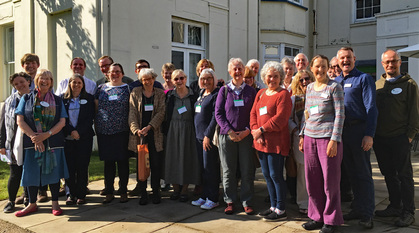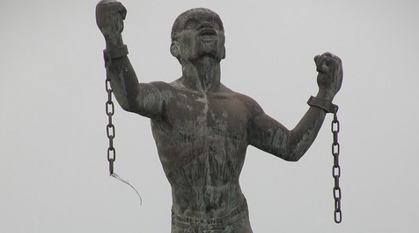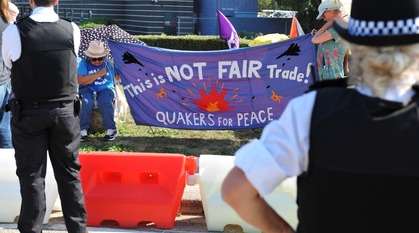From grief to hope: the enduring power of nonviolent resistance to Assad
Ellis Brooks reflects on the history of nonviolent civil resistance in Syria and asks what we can all learn about standing up to injustice.
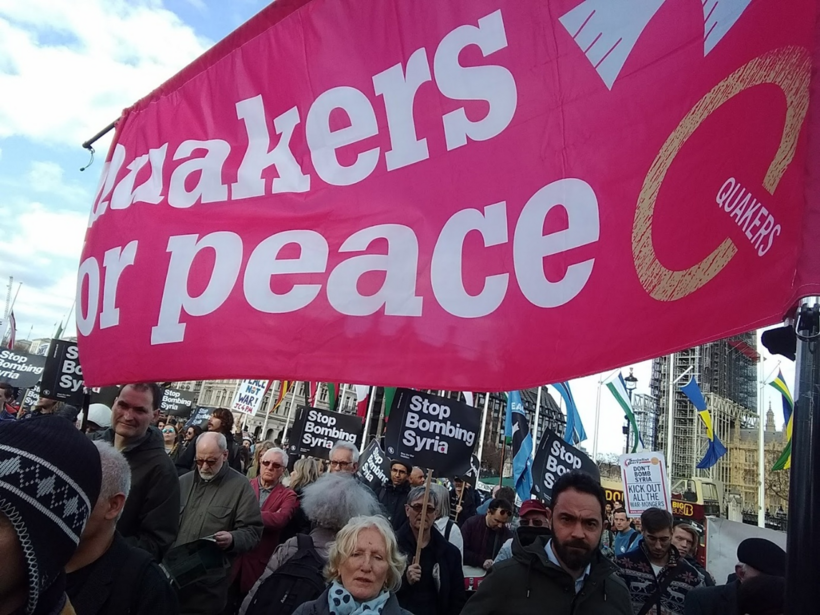
The seemingly sudden collapse of the Assad regime in Syria provokes a mixture of grief and hope. Grief for the uncountable losses of 13 years of violence, and a hope that the door might be ajar to a more peaceful future. Syrian activists described the event of December 2024 like a dream coming true, but the dream looks fragile given military action by Israel, an uncertain prospectus from the new government and no shortage of geopolitical manoeuvres to exploit the new reality. In the present tumult, it's easy to forget the uprising began with ordinary people.
What prompts you to stand up for change? A peace education activity we use in schools asks you to imagine yourself in the midst of an uprising against an oppressive dictator. You stand up if you think you would participate in nonviolent resistance or stay seated if you'd find a reason not to.
Imagine you're a labourer with children to support: stand up if you would join the funeral march of an opposition activist. You're a student in a government school and your friend posts a TikTok criticising the President: stand up if you'd re-share it. And so on. Students are pretty honest and often sit down as the peril increases, not taking the risk even in the imaginary scenario. Honestly, I'd sit out the reality myself.
Civil resistance
This of course was far from hypothetical for Syrians and it's incredible how many stood up. I was, for a time, the Syria Country Coordinator for Amnesty international UK. My time in that voluntary role coincided with what was referred to as the "Arab Spring". Syrians confronted a regime ready to unleash extreme violence to preserve itself.
Syria's security forces had been notorious for the practice of 'disappearing' people long before the uprising. Amnesty had for years been campaigning for prisoners of conscience like Anwar al-Bunni, Feda'a al-Horani, and a group we called the 'Sednaya Seven', named for Assad's infamous prison. The uprising led so many more join the movement. The industrial scale of detention, enforced disappearance, torture and murder unleashed by the regime aimed to annihilate dissent, but it failed.
Rafif Jouejati, co-founder of Free Syria, said, "Since 2011 civil society has been building its capacities. The non-violence movement of course started the whole 'Arab Spring' in Syria but civilian actions, civil society workshops and activities, other forms of nonviolent resistance contributed to the collapse of the regime. So while [Hayat Tahrir al-Sham] managed to put that final nail in the coffin of the regime, I do want to make sure everybody understands that civil actions played such a huge role since 2011."
The forces that shaped change
There is much for Britain and 'the West' to reflect on. The record includes colonial and postcolonial exploitation; addiction to the cursed bounty of oil; the invasion of Syria's neighbour Iraq; and military action in Syria itself contributing to "civilian carnage". UK forces that operated in Syria may face war crime charges. British weapons armed both Islamic State and their opponents. Meanwhile the UK showed reluctance to provide sanctuary. Despite western entanglement, international attention toward Syrians' human rights struggle was at best transient.
While the world failed Syria, Syrians didn't rest. Hayat Tahrir al-Sham's armed forces have caught the eye of the media, as military action usually does, but nonviolent resistance was there all along.
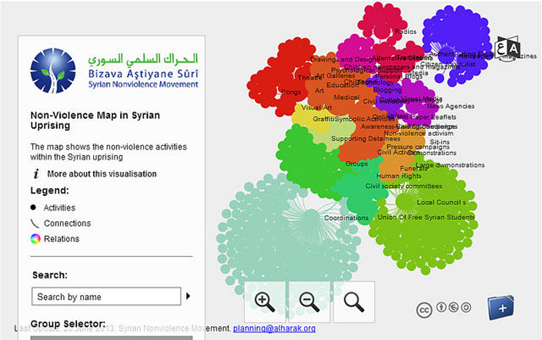
In 2013, Omar worked with Maimouna Alammar and the Syrian Nonviolence Movement to publish an online map of resistance activities. The map recorded how the uprising unfolded after a teenager named Mouawiya inscribed graffiti telling Assad "you're next" after other dictators had been deposed, followed by savage reprisals. For example it showed the Brides for Peace – Rima, Rowa, Lobna, Kinda and Lohna – who marched through Damascus in wedding dresses, calling for peace. It showed thousands of nonviolent actions – supporting detainees, education, organising funerals, support for bereaved families, medical aid, demonstrations, radio stations, training, organised graffiti, sit-ins, strikes, stunts, film making, songs.
This mosaic confounded regime propaganda that all the opposition were terrorists and affirmed the nonviolent commitment of thousands of Syrians defying vicious repression.
"All kinds of organisation across the country kept the civilian movement alive," says Rafif. "All of that training and work is coming to fruition now as Syrians try to rebuild their country." Women and feminist organisations played a huge role which the new Salvation Government has already sought to minimise.
Syrians were offering their answer to the question, can nonviolent action overturn oppression? This question is also the of work by the Nonviolent Action Lab. In the light of authoritarian backsliding, does the 3.5% rule still hold? Can a small minority change the world? This can be explored in the classroom with Non-violent action: A force for change from the Development Education Centre South Yorkshire (DECSY).
We can't know what might have happened if the uprising had not been accompanied by war, but it's fair to say the regime would not have faltered without the nonviolent movement.
Shaping a nonviolent future
The average age in Syria is 23, so a population that grew up with fear and loss as constant companions are now being confronted with building a new era.
Syrians are already mobilising to build a more peaceful future. Civil society is already organising. Noura Salam from the Syrian Women's Political Movement described how "the community and volunteer teams stepped in to organise and network, managing queues at bakeries, guarding institutions. Everyone is looking for peaceful life without weapons."
Perhaps there will be a process for truth, justice, reconciliation. There will be new civil rights struggles for women and minorities. The threat of violence is certainly not gone.
"The Syrian people will not abandon peaceful solutions," says Noura. "They will settle for nothing less than political transition and democratic elections."
Solidarity with may mean making common cause with Syria's human rights defenders, pressuring the UK to work for peace. Their actions also challenge the passivity, fatigue or hopelessness some of us encounter when searching for peace and justice.
With ordinary Syrians standing up for a more peaceful future, what is it that gets you out of your seat?
